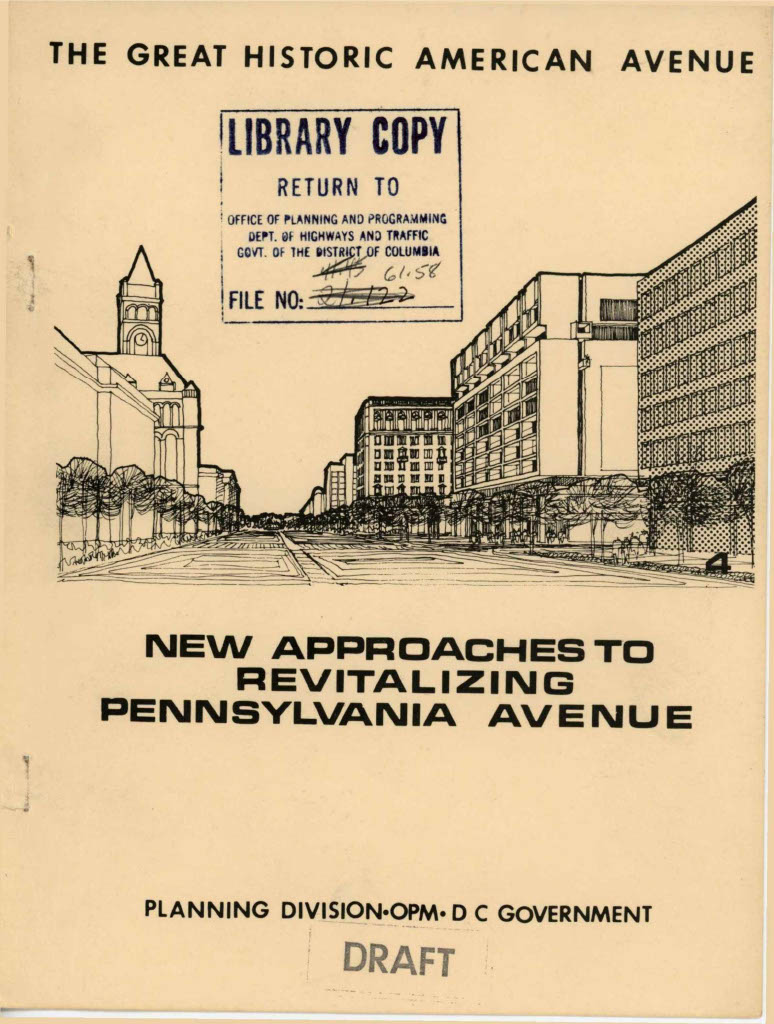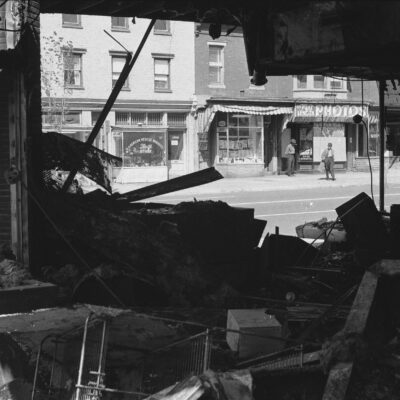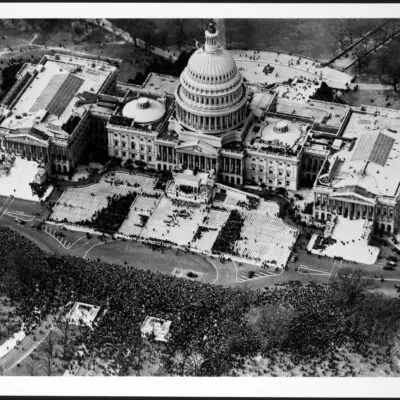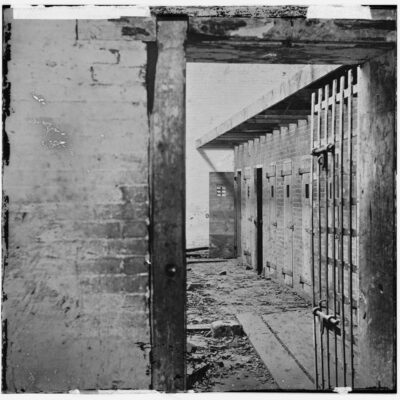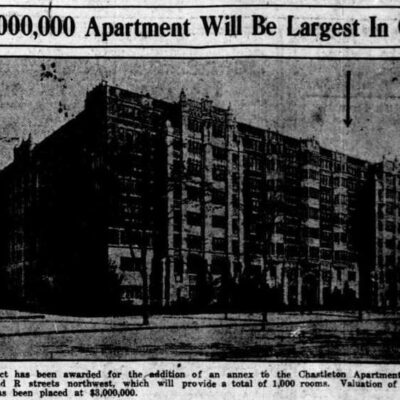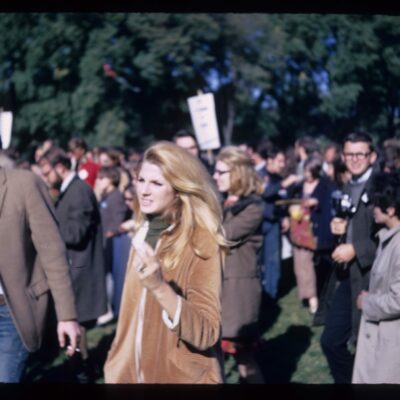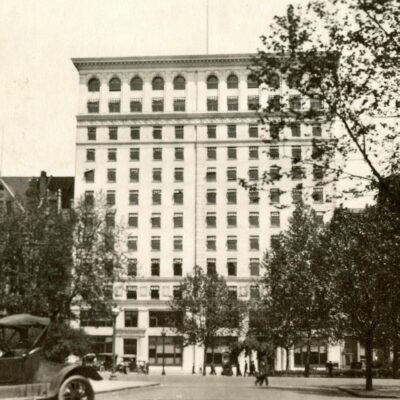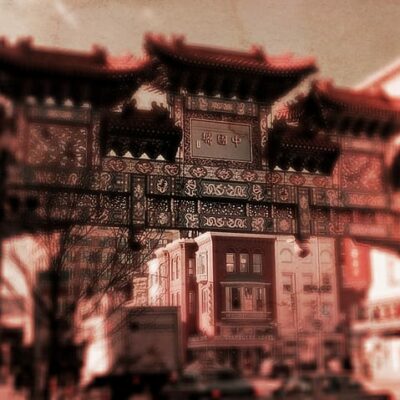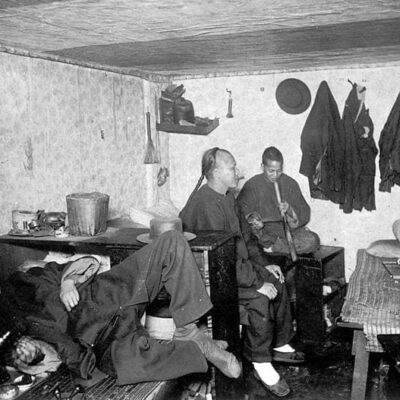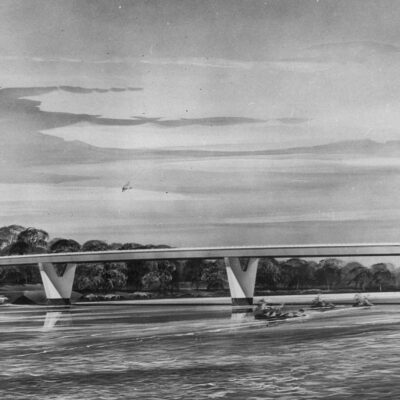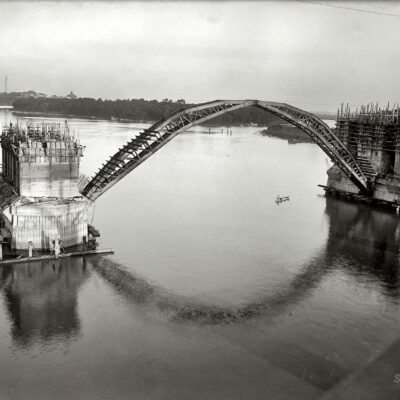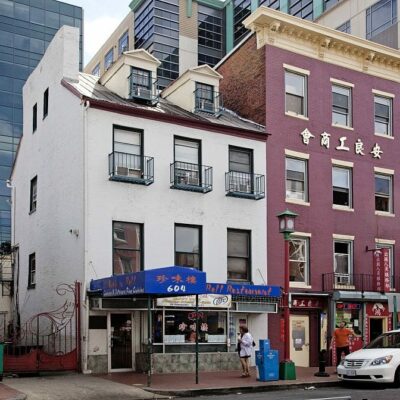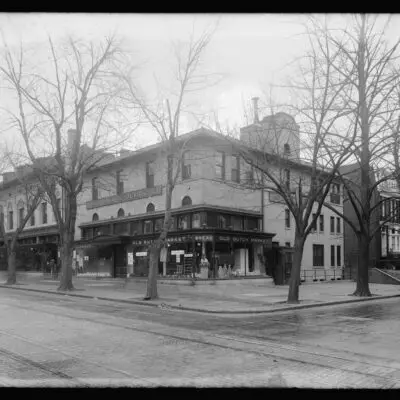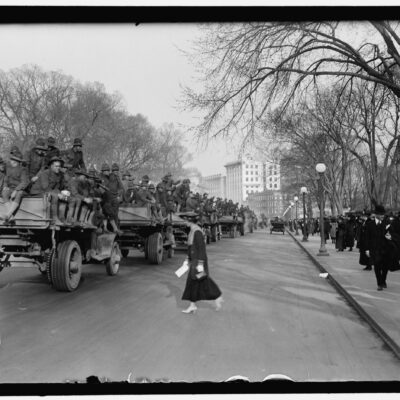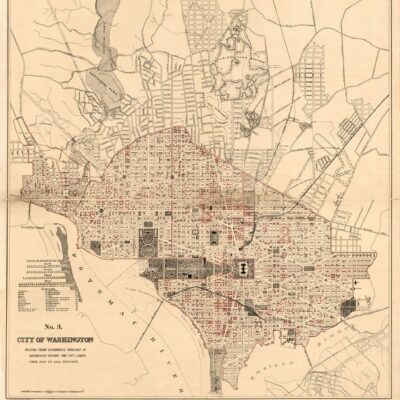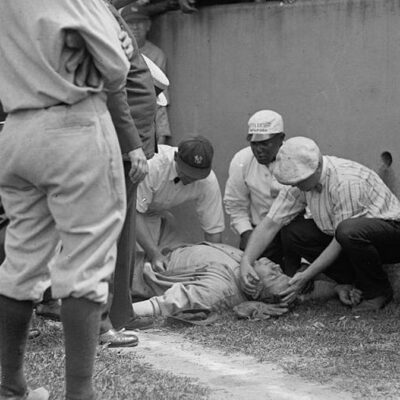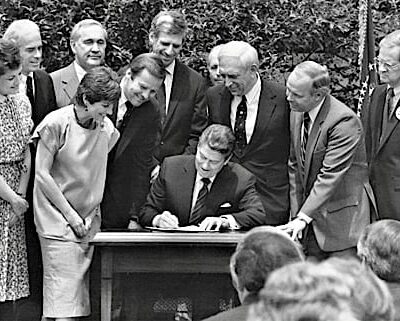In February 1974, amidst the winds of change sweeping through Washington D.C. with the advent of Home Rule, the District of Columbia Office of Planning and Management released a visionary document aimed at the revitalization of Pennsylvania Avenue. This period marked a significant transition for the city, moving towards greater self-governance and reflecting a broader desire for community involvement and local control.
Against this backdrop, Pennsylvania Avenue—a thoroughfare emblematic of American history and democratic ideals—stood on the cusp of a major transformation. The document’s declaration that “the avenue must be more than a roadway; it is a stage for American history” underscored the imperative to weave the rich tapestry of the nation’s past with the threads of contemporary urban life.
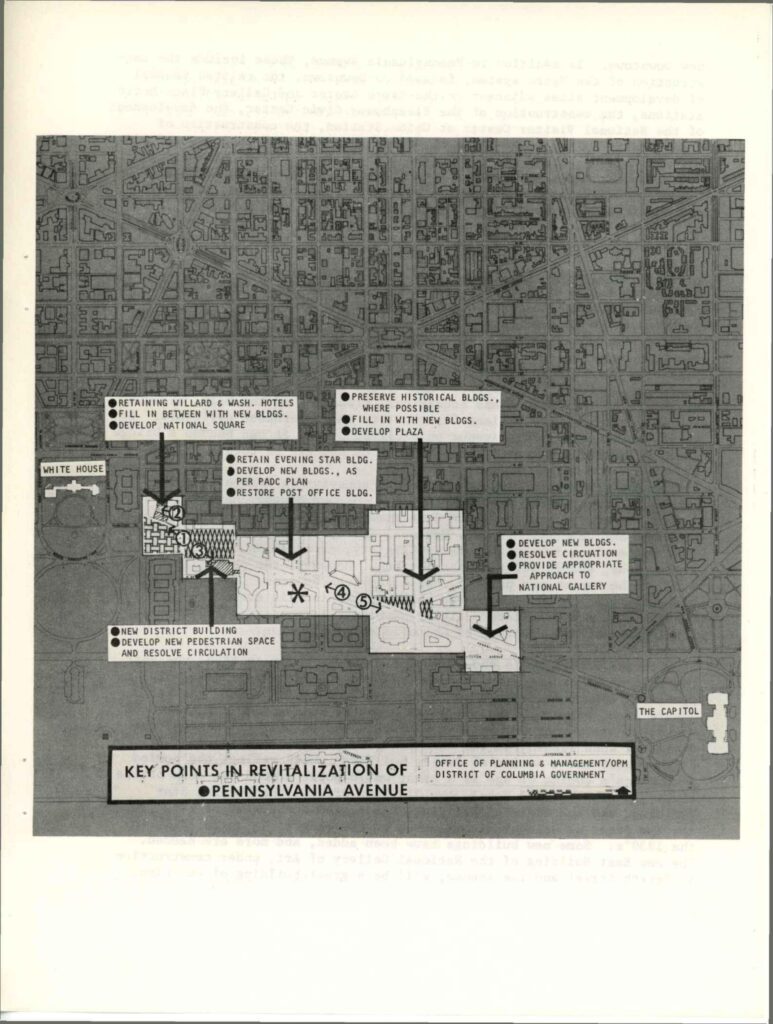
This era of newfound autonomy under Mayor Walter Washington, the city’s first elected mayor under Home Rule, infused the revitalization project with a spirit of renewal and optimism. The timing of the document’s release could not have been more propitious, reflecting a convergence of historical reverence and forward-thinking urban planning. It heralded a commitment to not only preserve the avenue’s storied legacy but also to reimagine it as a vibrant, accessible space that could adapt to the evolving needs of the city’s residents and visitors.
The drive towards revitalization of Pennsylvania Avenue thus mirrored the broader aspirations of Washington D.C.’s residents for a city that balanced governance with grassroots involvement, heritage with progress, creating a model for urban development that was as much about building community as it was about architectural and infrastructural renewal.
Historical Significance and Development Goals
Pennsylvania Avenue’s rich tapestry of history, serving as a backdrop for many of America’s defining moments, highlights the imperative for its sensitive and thoughtful revitalization. The guiding document outlines a vision that meticulously balances the preservation of historical integrity with the need for modern vibrancy. It underscores the avenue’s dual role as a symbol of democracy and a living, breathing urban space, advocating for the preservation of significant buildings alongside the development of mixed-use spaces to invigorate the area.
This key excerpt from the document emphasizes the approach towards historical continuity:
In proposing preservation of some remaining significant buildings we do not propose turning the clock back to recreate some earlier era. Pennsylvania Avenue is not Williamsburg. Instead by retaining older buildings and adding new buildings we insure a living Pennsylvania Avenue that still reflects elements of our past heritage.
The document’s vision for Pennsylvania Avenue is not merely about preserving the physical manifestations of America’s past but about rekindling the avenue’s spirit through modern infrastructure. It suggests a future where historical buildings are not only conserved but are also repurposed to meet current urban requirements, thereby creating a symbiotic relationship between the old and the new.
Economic Revitalization and Community Involvement
At the heart of the Pennsylvania Avenue revitalization effort was a robust commitment to economic development, with a special emphasis on supporting existing and Black-owned businesses. This focus not only aimed to reflect the diverse fabric of the American spirit but also to catalyze a more inclusive economic resurgence. The document underscored the critical role of transportation and infrastructure improvements in enhancing the avenue’s accessibility and vibrancy, making it a welcoming destination for all. Public participation was identified as a cornerstone of the planning process, ensuring that the community’s voice would be integral in shaping the avenue’s future.
The document passionately advocated for the inclusion of African-American businesses in the revitalization process:
Black Businesses on Pennsylvania Avenue: Black businesses should play a part in the revitalization of Pennsylvania Avenue. This is important in terms of Black economic development. It is also important in symbolic terms to the people of the District and the Nation. A number of Black-owned businesses — restaurants, shops, and commercial services — should be operating along the revitalized Pennsylvania Avenue. In addition, Black businesses should participate in the large-scale office building projects the Corporation will arrange. The Pennsylvania Avenue Development Plan should outline specific programs to insure that Black businesses are involved in rebuilding the Avenue.
This excerpt not only highlights the plan’s economic objectives but also its broader social goals, aiming to create a space that is reflective of and accessible to the diverse community it serves. The revitalization of Pennsylvania Avenue thus emerges as a multifaceted endeavor, blending economic opportunities with meaningful social inclusion, setting a precedent for urban development that values diversity and participation.

Future Vision and Call to Action
The document presents a future where Pennsylvania Avenue thrives as a space of historical significance and contemporary vitality. It calls for the creation of a new District Building, symbolizing the commitment to the avenue’s future. This vision for Pennsylvania Avenue is not just an urban renewal project but a pledge to preserve the narrative of American democracy. As we reflect on this visionary document, we are reminded of the importance of our collective involvement in the ongoing dialogue about the future of our nation’s history and identity. Let us all be part of this historic revitalization effort.
Read the full document here.
